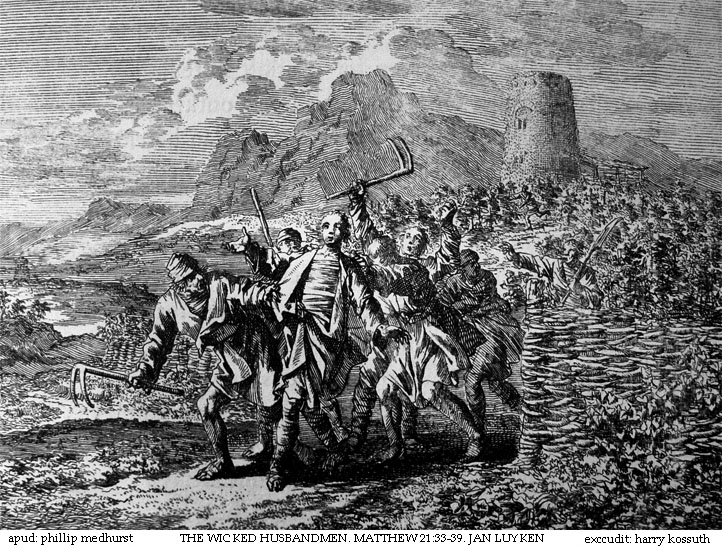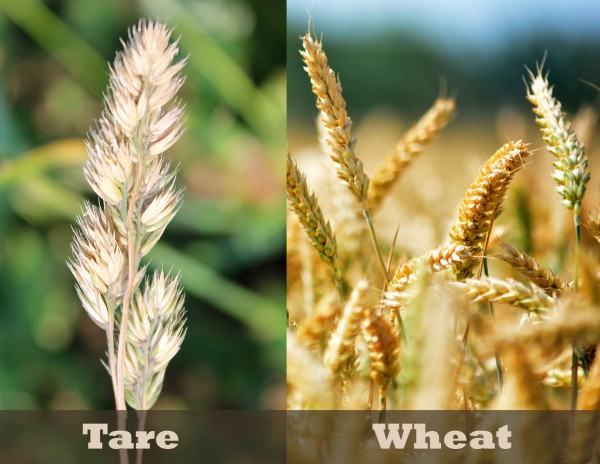“All these things Yeshua said to the crowds in parables; indeed, He said nothing to them without a parable. This was to fulfill what was spoken by the prophet:
“I will open My mouth in parables; I will utter what has been hidden since the foundation of the world.” (Matthew 13:34–35)
How can you discover the deeper things of the kingdom?
In Genesis, Elohim (God) spoke creation and all of its goodness into being in a very direct way. However, there are many hidden truths in the Hebrew Scriptures that angels and prophets longed to know.
To help reveal those truths, both Yeshua and the religious teachers of His day taught in parables, yet they carried with them very different messages.
Discovering those messages gives us great insight into the worldviews of God and the Jewish leadership, then and today.
Let’s get started.
The Purposes of a Parable
The Hebrew word for parable is mashal (מָשָׁל), which comes from a similar root verb (מָשַׁל), which means to represent or to be like.
This broad meaning makes it difficult for scholars to agree on a precise definition for a parable, which is why no one can identify exactly how many parables there are in Scripture.
The parables of Yeshua and the Rabbis we will look at here are actually metaphorical stories. A story, at minimum, contains a main character (king, owner, shepherd) who has a problem (with a son, field, sheep) that gets resolved.

Balaam Prophesies the Glory of Israel, by James Tissot
The first use of the word for parable (מָשָׁל) in the Bible is when “Balaam spoke his mashal.” (Numbers 23:7)
In that resolution process we find deeper purpose and meaning of how God wants us to live in this world. It is not surprising, then, that God tells us He is the author of many parables:
“I spoke to the prophets; it was I who multiplied visions, and through the prophets gave parables [literally, likenesses and representations].” (Hosea 12:10)
The parable became a favorite teaching tool of the Rabbis in Yeshua’s day. They even told several parables that explain how important a parable is, such as this one:
“It is like [mashal le] a king who lost a gold piece in his house, or a precious pearl. Does he not find it by means of a wick [worth] an issar [1/24th of a dinar]?
“Likewise, let not the mashal seem trivial in your eyes, for by means of the mashal a man is able to understand the words of Torah.” (Shir Hashirim Rabbah 1:8)
Just as a burning candle illuminates and can help one find a gold coin or precious pearl, so can a parable reveal the valuable treasures in the Word of God. Both Yeshua and the Rabbis would agree on that purpose; but at that point, they part ways.
Of 1,500 parables analyzed by Harvey McArthur and Robert Johnston, authors of They Also Taught in Parables, nearly 1,000 of them relate to illustrating, explaining, emphasizing, defending, or harmonizing Scripture passages. (p. 147)
As a whole, about two-thirds of all rabbinic parables deal with interpreting and applying Israel’s history to current times. The remainder deal with theological, moral, legal, and practical instruction for daily living. (pp. 110, 171)
In this way, rabbinic parables have helped to establish traditional Jewish values that are held dear to this very day. This helps us see that the parable writers were sincerely trying to guide the Jewish people to live according to God’s will.
It is similar to how we are accustomed to learning from Christian sermons in which pastors often use illustrations.
Yeshua also wanted the Jewish People to live according to God’s will. But as we will soon see, His stories did not fit the traditional message of the times.
In fact, perhaps eight of Yeshua’s 40 or so parables (one-fifth) target the religious leaders of his day or the nation of Israel as a whole, such as the parable of the children in the marketplace (Matthew 11:16–19) and the unfruitful fig tree (Luke 13:6–9).
If we really try to place ourselves in Yeshua’s sandals, we might also say that the parables of the Prodigal Son, the Good Samaritan, and even the Talents were originally meant for the ears of Israel’s elite.
Certainly, the parable of the Wicked Tenant directly rebuked these leaders. Yeshua even placed the parable in a setting often used in rabbinic teaching of His day—a vineyard, as described by the Prophet Isaiah:
“Let me sing for my beloved, my love-song concerning his vineyard . . . for the vineyard of the Lord of hosts is the house of Israel.” (From Song of the Vineyard, Isaiah 5:1, 7)
Let’s take a fascinating look at how the Rabbis and Yeshua interpreted and applied this same story.
Kingdom Past and Kingdom Present
Some form of the Wicked Tenant parable likely circulated in Yeshua’s day, but the following rabbinic version was recorded in the late 4th century AD.
In it, a king (symbolic for God) turns over his field (Israel) to renters (Ishmael, the son of Abraham and Hagar), who robbed the king. The king then gives the field to the renters’ children (Esau and his descendants), who were even more evil. Then the king took back his field and gave it to his own son (the patriarch Jacob) who went on to prosper in the land.
This parable attempts to explain the Scripture, which says, “The Lord’s portion is His people, and Jacob His allotted heritage.” (Deuteronomy 32:9)
Yeshua had a different Scripture in mind when He gave His version of this parable.
In Yeshua’s divine story, a man (God) turns over a vineyard (Israel) to renters (religious leaders) who rob from the man as they beat, insult, and/or kill every servant (prophet) the owner sends. Then the man sends his one and only beloved son (Messiah Yeshua), saying, “They will respect my son.”
“But those tenants said to one another, ‘This is the heir; come, let us kill Him, and the inheritance will be ours.’ So they seized Him, killed Him, and threw Him out of the vineyard.”
Yeshua continued, “What then will the owner of the vineyard do? He will come and destroy the tenants and give the vineyard to others [Believers in Yeshua the Messiah—Jew and Gentile].
Yeshua then said to the Pharisees:
“Have you not read this Scripture: ‘The stone that the builders rejected has become the cornerstone; this was the Lord’s doing, and it is amazing in our eyes’?”
The leaders left because they “perceived that He had told the parable against them.” (Mark 12:12)
More than just rebuking the leadership of the day, this parable explains that God was not happy with how they were managing the spiritual oversight entrusted to them, and especially how they rejected God’s beloved heir, the one prophesied to come—the Messiah, Yeshua.
Kingdom Past and Kingdom Future
While a great majority of rabbinic parables are meant to explain some aspect of Israel’s past history (like that of The Wicked Tenant), about half of Yeshua’s parables deal with future kingdom issues: redemption, judgment day, and the realities of heaven and hell.
This stark contrast between Yeshua’s teaching and that of the Rabbis is vividly seen in two parables about trees and about wheat and tares.
In the rabbinic parable, a king entrusted to a man an orchard with two trees that were intertwined: one tree producing life-giving fruit (representing Isaac, the promised son to Abraham and Sarah), and the other poison (Abraham’s son Ishmael and second wife Keturah, after Sarah’s death).
The man decided to let both trees grow until the king decided what to do about them. (Genesis Rabbah 61:6)
This rabbinic parable helps explain why Abraham (in Jewish tradition) didn’t formally bless Isaac—because he didn’t want to also bless Ishmael and his second wife Keturah. So, he didn’t bless any of them and, instead, waited for God to decide how to handle the situation, which He did:
“After Abraham’s death, God blessed his son Isaac.” (Genesis 25:11)
We see that the purpose of this rabbinic parable, like many, is to explain a Jewish tradition about Israel’s Biblical history. Yeshua, on the other hand, tells a very similar story—not to explain a past event, but a future judgment.
Yeshua’s parable describes a field where wheat and tares (a poisonous weed that resembles wheat) are intertwined.
The owner tells the servant to “let both of them grow together until the harvest; and at harvest time I will tell the reapers, ‘Collect the tares first and bind them in bundles to be burned, but gather the wheat into my barn.’” (Matthew 13:24–30)
Who are the tares and who are the wheat in God’s Kingdom?
To Whom Is Given the Secrets of the Kingdom?
Christians often hear how Yeshua taught in parables to keep the secret things of the kingdom hidden. Yet, 24 of His 40 or so parables include an interpretation. (They Taught in Parables)
Through His parables, Yeshua gave people ample opportunity to learn how to conduct their lives so they would enter eternal life, if they would only seek the answer and listen.
When “those around Him with the twelve asked Him about the parables,” Yeshua said, ‘To you has been given the secret of the kingdom of God.’” and he proceeded to explain the meaning. (Mark 4:11)
So, who are the weeds and who are the wheat?
The disciples asked and Yeshua answered in Matthew 13:36–43, which you can read in your own Bible.
Yeshua taught with heavenly hindsight and divine foresight as the Master Rabbi and true heir of the vineyard, who now sits at the right hand of the Father, and all authority under heaven and earth has been given to Him.
Rabbi Shaul (Apostle Paul) helped us to understand that with the authority and power of Yeshua (Jesus) in us, we are also to have His heavenly, divine outlook:
“If you have been raised with Messiah, seek the things that are above, where Messiah is, seated at the right hand of God.” (Colossians 3:1)
“But blessed are your eyes, for they see, and your ears, for they hear. for truly, I say to you, many prophets and righteous people longed to see what you see, and did not see it, and to hear what you hear, and did not hear it.” (Matthew 13:16-17)


















